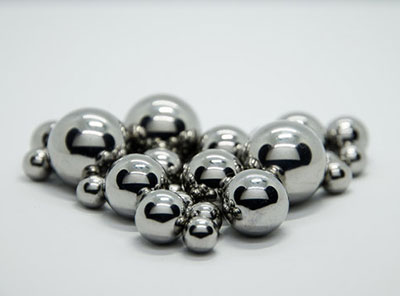Grinding capacity is influenced by the size of balls
Views: 1826 Update Date:May 13 , 2022
Current ball milling theory suggests that grinding capacity is influenced by the size of balls charged to the mill. In selecting the appropriate ball charge, the first objective is to determine that ball size which will grind the coarse particles most efficiently. This size should be the largest ball size charged to the mill. The second objective is to provide the correct ball size distribution to grind the finer particles in the composite ball mill feed. This objective may necessitate charging a second, smaller ball size with the maximum ball size. The practice of charging a pre-determined ratio of two or more ball sizes to a mill is called rationed ball charging.

Ball size distribution is governed by the wear law of the mill and by the wear characteristics through the cross-section of the balls charged to the mill. With this in mind, it is interesting to make a qualitative comparison of the ball size distributions which should be generated by 76 mm pearlitic carbon steel balls versus 76 mm martensitic alloy steel balls in the 2.93 m mills. The 76 mm pearlitic carbon steel balls used have a relatively flat hardness gradient from surface to center. Therefore, the inherent wear characteristic of these balls should be nearly constant during their life in a mill.
Martensitic alloy steel balls are much harder, than pearlitic carbon steel balls throughout their cross-section. However, 76 mm martensitic balls generally have a hardness gradient. This gradient reflects varying amounts of soft transformation products such as bainite and pearlite in the ball micro-structure. The wear rates of these products are higher than that of martensite at equivalent carbon content. As a result, the inherent wear rate of martensitic balls increases slightly at the ball becomes smaller. The reduced number of small balls, combined with a lower ball charge surface area, might explain the 6% lower grinding efficiency of a 76 mm martensitic ball charge compared to a 76 mm pearlitic ball charge.





